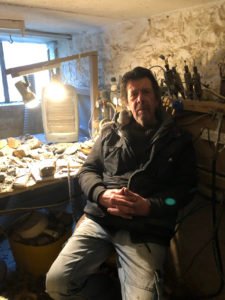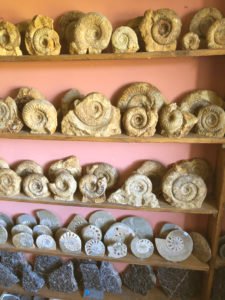Good weather is bad for fossil hunting !
It is strange that most people wish to go fossil hunting when the weather is good warm and sunny but this probably the worst time to go. So many people on the beach with very little movement in the cliffs and competition from the number of visitors.
The ideal weather is rain (lots of rain) stormy seas and very high tides. The cliffs contain the fossils to be found on the beach and the cliffs need storms and rain to crumble. The fossils found on the beach continually fall from the Jurassic cliffs. The Jurassic cliffs at Lyme Regis and Charmouth erode at a very fast rate.
Four year ago an archaeological dig was conducted on the top of Golden Cap (the highest point on the south coast of England). At the summit of Golden Cap (192m above sea level) was a neolithic burial mound which was about to go over the edge and permission was give to excavate this ancient feature. The archaeaologist who conducted the dig estimated that during the Roman period of Britain’s occupation (AD 43 to AD 410) Golden Cap extended out into the sea by a further 3 miles……………….






